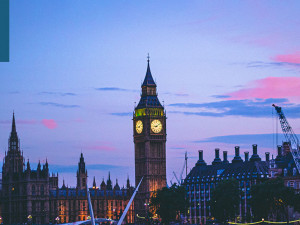
Surprise drop in inflation
Morning mid-market rates – The majors
15th September: Highlights
- Headline inflation falls as petrol price corrects
- Produce prices fall brings cheer to Equities
- Industrial production continues to suffer
GBP – Bank of England unlikely to be deterred from rate hike
Despite the fall in headline inflation, this is unlikely to be the start of a continuing fall in inflation long-term since domestic energy prices are still set to rise next month even though the Government has called the cap at an average of £2,500 per annum.
The Bank of England has delayed its rate setting meeting for a week as a mark of respect for the Queen. The Monetary Policy Committee will meet a week from today and the fall in inflation won’t deter them from hiking interest rates further.
There has been plenty of talk in Washington and Frankfurt recently regarding the neutral rate, where monetary policy is neither stimulating nor restricting growth. In London, Andrew Bailey hasn’t speculated about where that point is. All through the current tightening of policy, the Governor has appeared reticent to talk about a target for how high rates can eventually go.
The term dovish hike has been coined to describe the almost apologetic stance of the MPC hiking rates even though output and growth are continually slowing.
The size of the hike in rates that will be announced next week is still the subject of some debate. Following last month’s fifty-point hike, it will be hard to justify seventy-five points now, despite the hawkish outlook of both the ECB and Fed.
Several analysts believe that the Bank will go for fifty points and that the risk of a recession will drive that decision. At the last meeting, the vote for fifty points was unanimous and given the data released in the ensuing period, it is hard to see a majority suddenly turning more hawkish.
The property market has begun to exhibit signs of a slowdown, and this is affecting consumer confidence. The index fell to -44 in August, from -41 in July. This exceeded expectations of a fall to -42 although it is expected that it will improve following the news of support for consumers with the price of energy being called at a lower level than had been excited, for two years.
The pound rallied versus the dollar, closing at 1.1530. It remains hemmed in by selling interest around 1.1580 as traders see the Bank of England being less hawkish than other G7 Central Banks.
Recommend our services and earn up to £75 per successful referral
USD – But factory gate prices offer hope for the future
This will ignite the debate about how high rates will rise, as they will have moved firmly into restrictive territory. With concerns still being voiced by several major banks regarding a recession next year it may be that the Fed will announce a pause, if not at this meeting, then at the next, which will be held in the first week in November.
The Fed has been providing advance guidance to such a degree over the past few months that it has become predictable, and the markets are beginning to look further down the road for clues as to further Fed action.
With this in mind, yesterday’s release of producer prices for August indicated that inflation may be beginning to slow. Prices at the factory gate rose by 8.7% in August, down from 9.8% last month and a market expectation of 8.9%.
While they are not very highly correlated, producer prices are a fairly strong indicator of future inflation.
With rates expected to top 3% next week, speculation will start about just how high rates can go.
The more hawkish members of the FOMC see 4% early next year. There are two schools of thought. The first says that rates will top out and begin falling fairly quickly, possibly from around 4.25, while the other is that rates will reach 3.75% and remain there for at least a quarter.
As is often the case, a lot will depend on the next few employment reports. A majority of CFOs will be studying their fourth quarter revenue projections and considering how that can avoid shedding staff.
A further drag on the economy will be the proposed industrial action by railway employees. Their main grievance is around working conditions, although as is generally the case.it is exacerbated by their most recent pay award.
If there is a strike, and it lasts for an extended period, it may prove to be the catalyst for a recession, although it would mean that it was short-lived as activity would return quickly as soon as it was settled, unlike a major downturn in demand which would take longer to recover from.
The dollar index is still struggling to regain the 110 level as traders speculate about the rate hike in light of action by the ECB. closed at 109.72 virtually unchanged on the day.
EUR – One avenue of support not available due to rules
Therefore, they cannot provide the support that has been proposed in the UK where the energy sector takes loans which are government guaranteed, which will in turn reduce the energy costs charged to households.
Christine Lagarde made this clear when asked recently how the ECB could help with the rising cost of energy.
The ECB is going to continue to hike rates, but markets should not be expecting to see its hawkish stance to continue indefinitely.
The Governor of the Cypriot Central Bank said yesterday. Constantinos Herodotou confirmed yesterday that speculation about the eventual top of the official rate is pointless, as ten ECB itself hasn’t even begun to discuss how high rates will need to be raised to bring inflation under control.
Philip Lane, the ECB’s Chief Economist also spoke yesterday on the subject of interest rates, He believes that rates will need to rise over the next several meetings in order to meet what he called transition. By this, it is assumed to mean the transition from accommodative to restrictive rates.
He went on to say that while most measures of long-term inflation are at or around 2% a lot depends on the future direction of energy prices.
Inflation in the eurozone is currently driven by a different dynamic than the usual demand driven price increases of an overheating economy, and this will be taken into account when determining the appropriate level of interest rates.
Inflation is primarily being driven by an energy shock which affects all areas of the economy and is not a time sensitive driver.
There is consideration being given to a windfall tax on fossil fuel companies in order to provide funding for support from families suffering from excessive energy costs.
An argument is bound to ensue, since the EU Commission is not in favour of support unless it is targeted, so who gets what is likely to cause friction.
The euro is directionless as the market grapples with its understanding of just how hawkish the ECB is likely to be.
It traded in a narrow range yesterday, closing at 0.9970
Alan Hill
Alan has been involved in the FX market for more than 25 years and brings a wealth of experience to his content. His knowledge has been gained while trading through some of the most volatile periods of recent history. His commentary relies on an understanding of past events and how they will affect future market performance.



